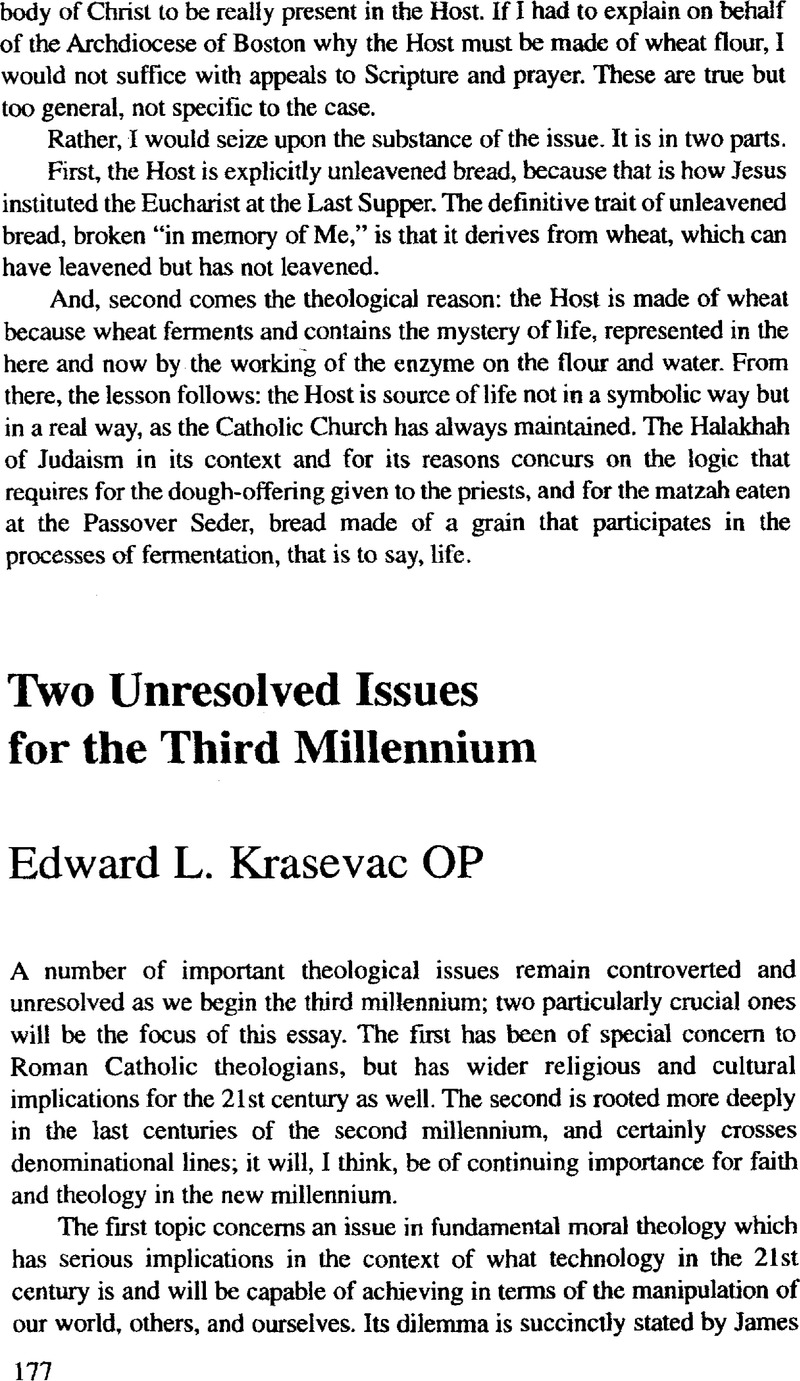No CrossRef data available.
Article contents
Two Unresolved Issues for the Third Millennium
Published online by Cambridge University Press: 01 January 2024
Abstract

- Type
- Other
- Information
- Copyright
- Copyright © 2001 Provincial Council of the English Province of the Order of Preachers
References
1 James F. Keenan, S.J., Goodness and Righrness in Thomas Aquinas's Summa Theologiae (Washington, D.C., Georgetown University Press, 1992), p, 25.
2 Timothy OConnell gives a good definition of proportionalism: Morality is a matter of maximizing the premoral goods that we encounter and of minimizing the prernoral evils. Rightness is constituted by doing as much good as possible and as little evil as necessary. and It is the proportional prevalence of premoral good over premoral evil that in fact characterizes the reality of moral action for the Christian person. Timothy E. OConnell, Principlesfor a Catholic Moraiiiy, Second revised edition (San Francisco: Harper Collins, 1990). pp 176-7 and 199.
3 Gordon Michelson, Lessing's Ugly Ditch: A Study of Theology and History (University Park, Pennsylvania: Pennsylvania State University Press, 1985). In essence, Michelson holds that Lessing's ditch had three interrelated aspects: epistemological (I don't know for sure what happened in the past; metaphysical (even if I did know for sure, events don't produce truths); existential (events in the past are often irrelevant to me in the present, even if I could be sure of them and they did produce a certain kind of truth). I note that these three aspects of the ditch roughly correspond to Troeltsch's three principles of criticism, correlation, and analogy.




